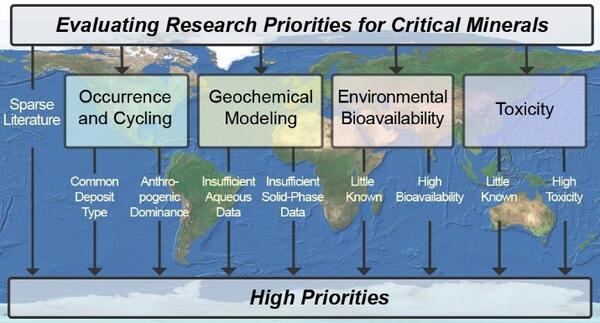This infographic introduces an approach that could subsequently be used to prioritize environmental research for the full range of critical elements.
Multimedia
One-stop collection of videos, photography, and audio. All items in this gallery are considered public domain unless otherwise noted.
Images

This infographic introduces an approach that could subsequently be used to prioritize environmental research for the full range of critical elements.
Text box including a short question/answer on why microbes are important. Can be used for outreach.
Text box including a short question/answer on why microbes are important. Can be used for outreach.
Q: What’s the difference between PFOS and PFAS?
A: PFAS is a broad term that refers to a large group of man-made chemicals that contain fluorine atoms. This group includes thousands of different compounds and are highly resistant to degradation.
Q: What’s the difference between PFOS and PFAS?
A: PFAS is a broad term that refers to a large group of man-made chemicals that contain fluorine atoms. This group includes thousands of different compounds and are highly resistant to degradation.
Map of U.S. Geological Survey PFAS study areas. Specific points indicate: 1) Surface water and field studies (teal circles), 2) PFAS in tapwater studies (black circles), 3) PFAS in groundwater studies (orange circles), and 4) Sites where atmospheric samples were collected (yellow triangles).
Map of U.S. Geological Survey PFAS study areas. Specific points indicate: 1) Surface water and field studies (teal circles), 2) PFAS in tapwater studies (black circles), 3) PFAS in groundwater studies (orange circles), and 4) Sites where atmospheric samples were collected (yellow triangles).

This infographic introduces an approach that could subsequently be used to prioritize environmental research for the full range of critical elements.
This infographic introduces an approach that could subsequently be used to prioritize environmental research for the full range of critical elements.

Multidisciplinary Approach That Considers Occurrence, Geochemistry, Bioavailability, and Toxicity to Prioritize Critical Minerals for Environmental Research
Multidisciplinary Approach That Considers Occurrence, Geochemistry, Bioavailability, and Toxicity to Prioritize Critical Minerals for Environmental Research
Videos
Juvenile Coho salmon (Oncorhynchus kisutch) exhibiting abnormal behaviors associated with exposure to 6PPD-quinone, a derivative of the compound 6PPD which is used in tires to prevent wear.
Juvenile Coho salmon (Oncorhynchus kisutch) exhibiting abnormal behaviors associated with exposure to 6PPD-quinone, a derivative of the compound 6PPD which is used in tires to prevent wear.





